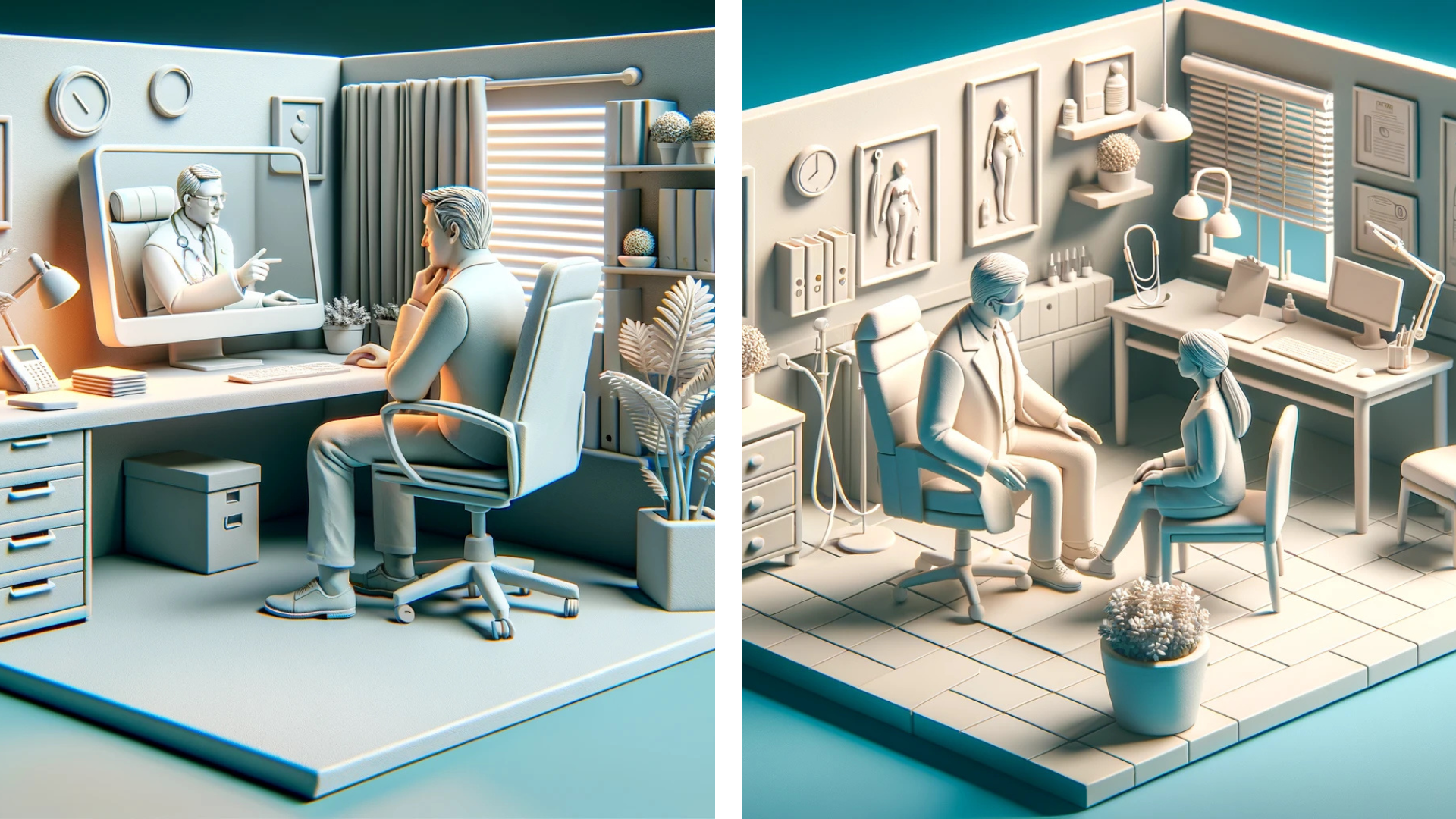Healthcare has always been a cornerstone of societal well-being. However, as digital technology permeates every facet of life, the healthcare sector is also witnessing a revolutionary shift. The advent of telemedicine is challenging traditional healthcare paradigms, offering a new perspective on patient care. This comparative analysis delves into the nuances of telemedicine versus traditional healthcare, exploring their benefits, limitations, and the future of medical practice.
The Rise of Telemedicine
Telemedicine, the remote diagnosis and treatment of patients through telecommunications, has surged in popularity. It’s propelled by the need for accessible healthcare, especially for people living in remote areas or leading a busy schedule. Telemedicine offers a myriad of services, from consultations via text, video and voice calls to remote monitoring of chronic conditions, thus breaking down geographical barriers and time constraints, and making healthcare more accessible.
Traditional Healthcare: The Personal Touch
Traditional healthcare, with its face-to-face consultations, remains deeply ingrained in Maltese culture. The tactile nature of traditional medicine, where a doctor’s physical presence can offer comfort and reassurance, cannot be understated. This method allows for immediate physical examinations, a critical component in diagnosing many conditions. The personal connection formed between patient and doctor, built over time, fosters trust and confidence, elements that are harder to replicate in a virtual setting.
Accessibility and Convenience
Telemedicine’s most significant advantage lies in its convenience and accessibility. For residents in Malta’s more secluded areas, for those with mobility issues or unable to take a day off from work to visit a doctor, telemedicine offers an opportunity to dedicate more time to healthcare, ensuring that this is just a video call away. It’s particularly beneficial during times of public health crises, such as during the COVID-19 pandemic, where minimising physical contact can be a matter of public safety.

On the other hand, traditional healthcare services, with their structured appointment systems and the necessity for physical presence, can pose challenges. Waiting times, travel & parking times and cost, and the physical exertion of visiting a healthcare facility can be daunting, particularly for the elderly or chronically ill.
Quality of Care
Critics of telemedicine often question the quality of care provided through a screen. While telemedicine has made strides in ensuring high-quality healthcare, certain limitations persist. The inability to conduct physical examinations or immediate diagnostic tests can hinder the accuracy of diagnoses. However, advancements in technology, such as digital stethoscopes and remote monitoring devices, are rapidly bridging this gap.
Traditional healthcare, however, will likely always stand unrivalled in complex medical cases requiring detailed physical assessment or emergency care.

The Future Landscape
The future of healthcare in Malta likely lies in a hybrid model that leverages the best of both worlds. Integrating telemedicine into the existing healthcare system can enhance efficiency, reduce strain on medical facilities, and provide more personalized care options.
This is where Digimed shines as a complete solution — offering best of breed telemedicine facilities for virtual consultations, but also providing value for traditional visits. Whether consulting with a doctor in-clinic or online, Digimed allows for the secure storage of Electronic Health Records which allow patients and their families to maintain complete and up-to-date medical profiles for the first time ever. Digimed also facilities e-Prescriptions following a traditional or telemedicine consultation, as well as the facility to export any Electronic Health Record as an insurance claim form with supporting insurance providers. Digimed was built to bridge the gap between Telemedicine/Digital Healthcare and Traditional Healthcare.
Telemedicine and traditional healthcare are not mutually exclusive but are complementary facets of a holistic healthcare system. Each has its strengths and limitations, and the choice between them depends on individual patient needs, the type of care required, and the context of the healthcare system. As we move forward, the integration of telemedicine and digital healthcare solutions into the broader healthcare ecosystem presents an exciting opportunity to enhance the quality, accessibility, and efficiency of healthcare services, ensuring that all Maltese residents have access to the care they need, when they need it.
Digimed: Connecting you with care, not providing it. All articles on Digimed’s Education Centre are intended for educational purposes and not to provide medical advice. Always consult a licensed professional for medical advice.
